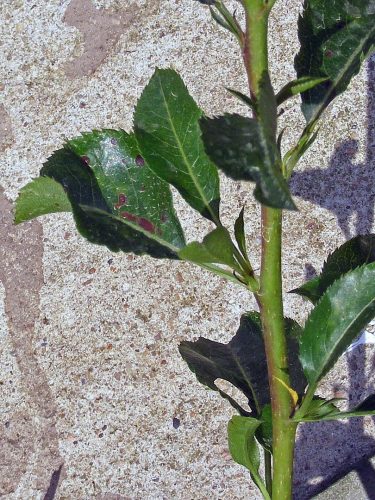Stemphylium vesicarium is a widespread fungal disease. This fungal disease causes various diseases in different host plants.
Stemphylium vesicarium causes various diseases on different host plants, such as wilting and root rotting of radish sprouts, gray leaf spot in paprika, and Pear Brown Spot on pears. It’s widespread worldwide.
Conference and Doyenné du Comice are very susceptible to Pear Brown Spot. The fungus hibernates on infested fallen leaves. On this leaf, fruiting bodies develop that spread spores. This spread occurs during the day in humid and sweltering weather, as high temperatures and a long leaf wet period are required to infect leaves and fruit. It takes several weeks for the first symptoms of the infection to appear. In practice, this is early July (leaf) and late July/early August (fruit).
Dark brown, black spots develop on the leaves. These spots have a distinctive V-shape. The midrib of the leaf is usually black. Eventually, the whole leaf turns black, after which it falls off. On the ripening fruit, one on several sunken black spots develop, often with a red rim around it. Underneath these spots, the flesh rots away. Rotting continues even during storage.
Stemphylium vesicarium causes Stemphylium purple spot on asparagus and fern.
Control
After infestation by Stemphylium vesicarium, it is not possible to remove the fungus. Remove affected fruit and leaves (not to the compost heap).
Prevention
Shredding and quick disposal of fallen leaves around pear trees in the fall helps prevent Pear Brown Spot.
In fruit cultivation, agents against scab are sprayed preventively because these agents have also been shown to work against Pear Brown Spot.

